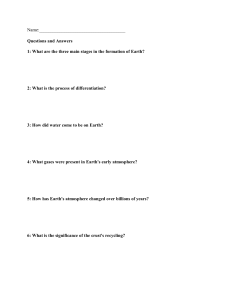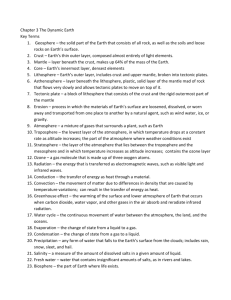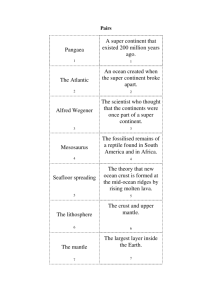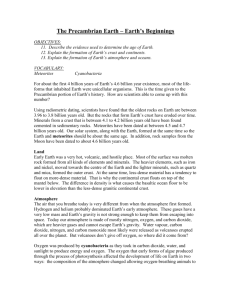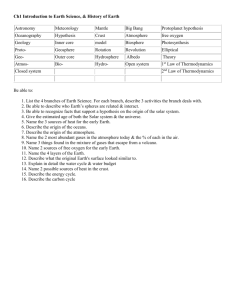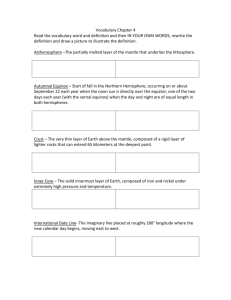Study Guide - TeacherWeb
advertisement
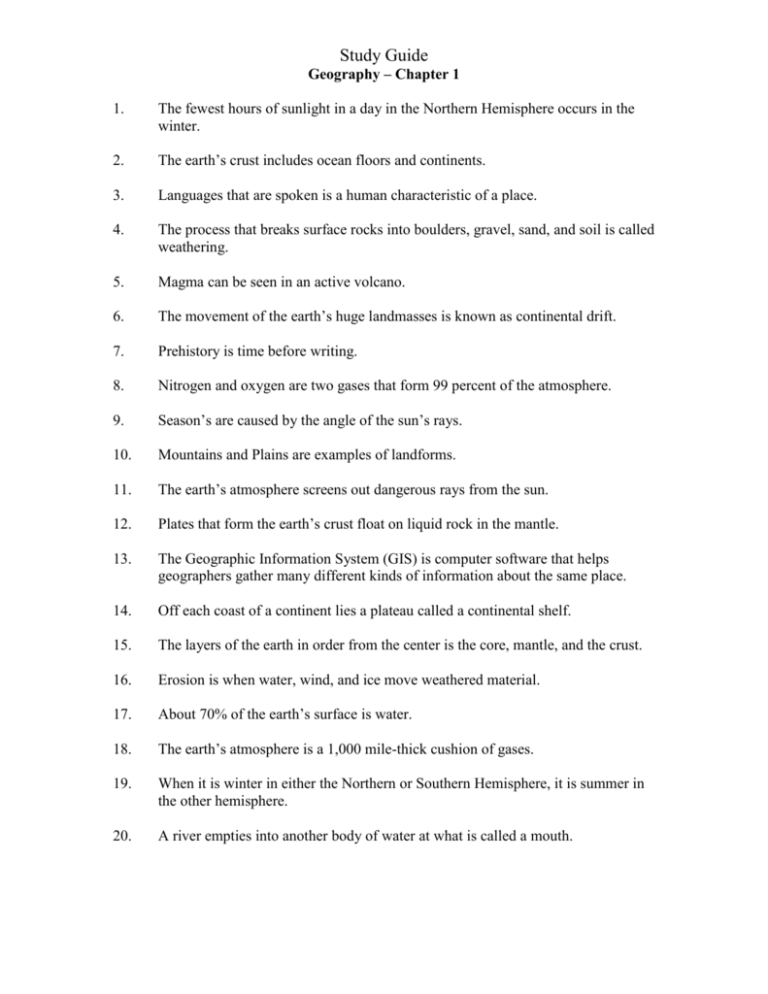
Study Guide Geography – Chapter 1 1. The fewest hours of sunlight in a day in the Northern Hemisphere occurs in the winter. 2. The earth’s crust includes ocean floors and continents. 3. Languages that are spoken is a human characteristic of a place. 4. The process that breaks surface rocks into boulders, gravel, sand, and soil is called weathering. 5. Magma can be seen in an active volcano. 6. The movement of the earth’s huge landmasses is known as continental drift. 7. Prehistory is time before writing. 8. Nitrogen and oxygen are two gases that form 99 percent of the atmosphere. 9. Season’s are caused by the angle of the sun’s rays. 10. Mountains and Plains are examples of landforms. 11. The earth’s atmosphere screens out dangerous rays from the sun. 12. Plates that form the earth’s crust float on liquid rock in the mantle. 13. The Geographic Information System (GIS) is computer software that helps geographers gather many different kinds of information about the same place. 14. Off each coast of a continent lies a plateau called a continental shelf. 15. The layers of the earth in order from the center is the core, mantle, and the crust. 16. Erosion is when water, wind, and ice move weathered material. 17. About 70% of the earth’s surface is water. 18. The earth’s atmosphere is a 1,000 mile-thick cushion of gases. 19. When it is winter in either the Northern or Southern Hemisphere, it is summer in the other hemisphere. 20. A river empties into another body of water at what is called a mouth.
